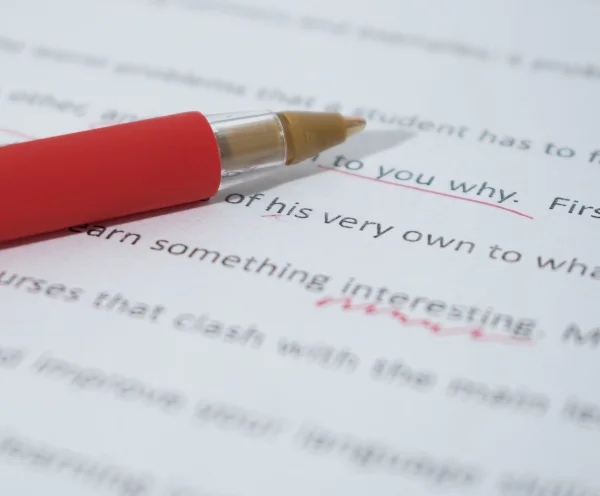Navigating English Adjectives and Adverbs:
A Comprehensive Guide
English is a language that can be challenging to master, especially when it comes to the correct use of adjectives and adverbs. Adjectives and adverbs are essential parts of speech and writing that are used to provide extra information about nouns and verbs, respectively. In this article, we will explore the differences between adjectives and adverbs, how to use them correctly, and common mistakes that non-native speakers make when using them.

Adjectives
What are Adjectives?
Adjectives are words that are used to describe or modify nouns or pronouns. They provide additional information about the noun or pronoun, such as size, shape, colour, age, etc. For example, in the sentence, “The big blue house is on the hill”, the words “big” and “blue” are adjectives that describe the noun “house.”
Using Adjectives Correctly
When using adjectives, it is important to place them in the correct order. The general order of adjectives in English is as follows:- Opinion or Observation
- Size
- Age
- Shape
- Color
- Origin
- Material
- Purpose
For example, in the sentence, “I saw a beautiful, large, old, round, red, Italian, wooden, dining table”, the adjectives are placed in the correct order.
One helpful trick to remember the correct order of adjectives in English is to use the acronym “OSASCOMP.”
Each letter in the acronym represents a category of adjectives, in the correct order:
- O – Opinion (e.g., beautiful, ugly)
- S – Size (e.g., small, large)
- A – Age (e.g., young, old)
- S – Shape (e.g., round, square)
- C – Color (e.g., red, blue)
- O – Origin (e.g., French, Japanese)
- M – Material (e.g., wooden, plastic)
- P – Purpose (e.g., cooking, gardening)
Using this acronym can help non-native speakers to remember the correct order of adjectives in English. However, it is important to note that not all adjectives will fall into every category, and not all categories need to be included in every sentence. The order of adjectives may also vary depending on the context and personal style of the speaker or writer.
Types of Adjectives
Adjectives can also be categorized by their function in a sentence.- Descriptive Adjectives: These are the most common type of adjectives and are used to describe the physical or sensory characteristics of a noun. Examples include “big”, “red”, “cold”, “loud”, etc.
- Quantitative Adjectives: These adjectives are used to describe the quantity or amount of a noun. Examples include “few”, “many”, “several”, “numerous”, etc.
- Demonstrative Adjectives: These adjectives are used to indicate or point out a specific noun. Examples include “this”, “that”, “these”, and “those.”
- Possessive Adjectives: These adjectives are used to show ownership or possession of a noun. Examples include “my”, “your”, “his”, “her”, “its”, “our”, and “their.”
- Interrogative Adjectives: These adjectives are used to ask questions about a noun. Examples include “which”, “what”, and “whose.” Interrogative, possessive, and demonstrative adjectives are all types of adjectives that modify nouns in different ways.
The order of these adjectives in a sentence generally follows the same pattern as for any type of adjective (OSASCOMP; Opinion, Size, Age, Shape, Color, Origin, Material, Purpose).
It’s important to note again that the order of adjectives in English is not always fixed, and there may be exceptions based on the specific context or personal preference of the speaker or writer. However, following the OSASCOMP pattern can generally help to create clear and natural-sounding sentences in English.
It is also important to note that adjectives do not change form depending on the gender or number of the noun they are modifying. For example, the adjective “happy” can be used to describe both a man and a woman, and the plural noun “children” can be described as “happy children.”
Common Mistakes with Adjectives
Comparative and superlative adjectives are used to compare the degree of a quality or characteristic between two or more nouns, and are often used incorrectly. Comparative adjectives are used to compare two nouns, while superlative adjectives are used to compare three or more nouns.
For example, consider the adjective “tall”:
- Comparative form: “taller” (used to compare two nouns, e.g. “John is taller than Mike.”)
- Superlative form: “tallest” (used to compare three or more nouns, e.g. “John is the tallest person in the room.”)
Another example is the adjective “happy”:
- Comparative form: “happier” (e.g. “I am happier today than I was yesterday.”)
- Superlative form: “happiest” (e.g. “This is the happiest day of my life.”)
In general, comparative adjectives end in “-er” or use the word “more”, while superlative adjectives end in “-est” or use the word “most.” However, there are some irregular forms that do not follow this pattern, such as “good” (comparative: “better”, superlative: “best”) and “bad” (comparative: “worse”, superlative: “worst”).
Another common mistake is the use of double comparatives or superlatives, such as “more bigger” or “most biggest.” These forms are incorrect and should be avoided.
Adverbs
What are Adverbs?
Adverbs are words that are used to modify verbs, adjectives, or other adverbs. They provide information about the manner, time, place, degree, frequency, or reason of an action or state. For example, in the sentence, “She sings beautifully” the word “beautifully” is an adverb that modifies the verb “sings”.
Types of Adverbs
There are several types of adverbs in English, including:
- Adverbs of Manner: These adverbs describe how an action is done. Examples include “quickly”, “slowly”, “easily”, “carefully”, etc.
- Adverbs of Time: These adverbs describe when an action is done. Examples include “now”, “later”, “yesterday”, “soon”, etc.
- Adverbs of Place: These adverbs describe where an action is done. Examples include “here”, “there”, “everywhere”, “nowhere”, etc.
- Adverbs of Degree: These adverbs describe the intensity or degree of an action or state. Examples include “very”, “quite”, “too”, “enough”, etc.
- Adverbs of Frequency: These adverbs describe how often an action is done. Examples include “always”, “often”, “rarely”, “never”, etc.
- Adverbs of Reason: These adverbs describe the reason or cause of an action or state. Examples include “because”, “therefore”, “consequently”, “hence”, etc.
Using Adverbs Correctly
When using adverbs, it is important to place them in the correct position in the sentence. Adverbs of manner usually come after the verb, while adverbs of frequency usually come before the main verb. Adverbs of time and place can be placed at the beginning or end of a sentence.
- Adverb of manner: “He walks fast on the way to work.”
- Adverb of frequency: “He often walks to work.”
- Adverbs of time and place: “He walks to work in the morning.” and “In the morning he walks to work.” are both correct.
It is also important to use the correct form of the adverb. A lot of adverbs are formed by adding “-ly” to an adjective. For example, “quick” becomes “quickly”, and “careful” becomes “carefully.” However, there are adverbs that do not follow this pattern, such as “well”, “fast”, and “hard.”
Common Mistakes with Adverbs
One common mistake that non-native speakers make when using adverbs is the confusion between “good” and “well.” “Good” is an adjective that describes nouns, while “well” is an adverb that describes verbs. For example, “She is a good singer” is correct, while “She sings good” is incorrect. The correct form is “She sings well.”
Another mistake is the overuse of adverbs. While adverbs can add emphasis and clarity to a sentence, too many adverbs can make a sentence sound awkward, exaggerated and cluttered. This is especially important in academic writing, where it is important to have an unbiased tone and therefore best to use adverbs carefully, sparingly and only when necessary.
Conclusion
Adjectives and adverbs are important parts of speech in English that can be challenging for non-native speakers to master. By understanding the types of adjectives and adverbs, how to use them correctly, and common mistakes to avoid, non-native speakers can improve their English language skills and communicate more effectively. Remember to place adjectives in the correct order and use adverbs in the correct position and form. Memorizing the general pattern in which adjectives and adverbs are placed in a sentence will greatly enhance the fluency of both your written and spoken English.
Unfortunately, there are exceptions to these “rules”, so if you are in doubt you should always look up example sentences with the noun/adjective or verb/adverb combination you are trying to use. With practice and patience, using adjectives and adverbs correctly will eventually become second nature.

